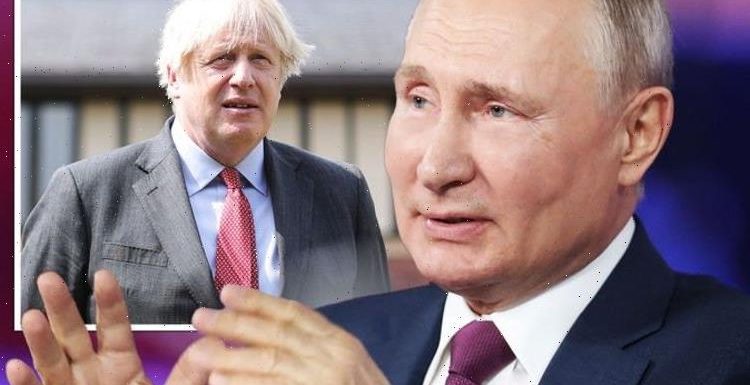
Prince Charles drives futuristic hydrogen car in Wales
We use your sign-up to provide content in ways you’ve consented to and to improve our understanding of you. This may include adverts from us and 3rd parties based on our understanding. You can unsubscribe at any time. More info
While pipeline gas does not run directly from Russia into Britain, the UK is currently suffering the effects of the Kremlin’s gas squeeze. Russian President Vladimir Putin has been accused of deliberately withholding gas deliveries to Europe to speed up the approval of a new gas pipeline, Nord Stream 2. Moscow reportedly slashed volumes travelling through its vast network of pipelines and has been diverting gas to the East through the Yamal-Europe pipeline for 30 days in a row.
And Russia’s gas giant, Gazprom, has said that it has no plans to send this gas West in February either.
The result has seen European energy costs soar, with December prices even surpassing October records.
And Britain is impacted by this integrated market.
It also imports gas from European partners, including some Russian pipeline gas via the Netherlands and Belgium.
Now, UK energy bills are expected to soar by 50 percent in April when the price cap (the maximum tariff) rises as millions of households face the threat of fuel poverty.


But Mr Johnson has been handed a plan to avoid a crisis.
Instead of being completely dependent on gas as prices continue to rise, another energy source – hydrogen – could be key, according to experts at Monash University.
Experts Stuart Walsh and Changlong Wang from Monash University told Express.co.uk: “Hydrogen can be used to supplement the existing gas supply by using a mix of hydrogen and gas in existing gas networks, or by using electricity generators rated for both hydrogen and gas.
“Hydrogen also provides an alternative to gas in many industrial processes like steel production and cement.
“As it provides an alternative fuel to gas, hydrogen adds diversity to the existing energy market.

“Hydrogen production is likely to be more distributed than natural gas – making net energy importers like the UK less reliant on a few external suppliers.”
And the Government has already started work on making the switch.
In fact, the Prime Minister has stated he wants to make the UK the “Qatar of hydrogen”.
Mr Johnson has even drafted up the UK’s Hydrogen Strategy, a core part of his “Ten Point Plan for a Green Industrial Revolution”.
The strategy is to use a mix of green hydrogen and blue hydrogen.
DON’T MISS
Covid breakthrough as ‘Achilles’ heel’ of virus found [REPORT]
Charles Darwin mystery solved after 140 years with stunning find [REVEAL]
End of the world warning as Elon Musk warns of extinction [INSIGHT]

Green hydrogen is made from water using an electric current and is a net zero energy source.
Blue hydrogen is made from natural gas, but emits low levels of carbon to reach its target of generating five Gigawatts (GW) of low-carbon energy.
Back in December, CEO of Gencell Rami Reshef told Express.co.uk that the UK’s strategy was a “good step forward”.
He said: “Going green in steps is absolutely ok, going from grey to blue and then eventually everything should be green hydrogen.”
Grey hydrogen is also produced from natural gas, but has a significantly worse impact on the environment than blue hydrogen.

While this strategy is likely to reduce Britain’s dependence on gas in the future, Britain does currently rely on foreign supplies
Gas from fields in the North Sea and the Irish Sea provides around 40 percent of the country’s supplies.
Russian gas imports into the UK account for around five percent of the country’s total usage.
And the experts from Monash University said it is unlikely green hydrogen will be available on the grid until at least 2025.
The experts said: ”It is difficult to say how far we are from achieving green hydrogen on a larger scale and estimates vary.
“However, there are a number of commercial-scale hydrogen projects scheduled to be up and running by 2025.
“For hydrogen in the short term, the major challenge is scaling up.
“Green hydrogen will become increasingly competitive due to its economies of scale as it ramps up from demonstration scale to commercial scale and then to export-scale projects.”
Source: Read Full Article